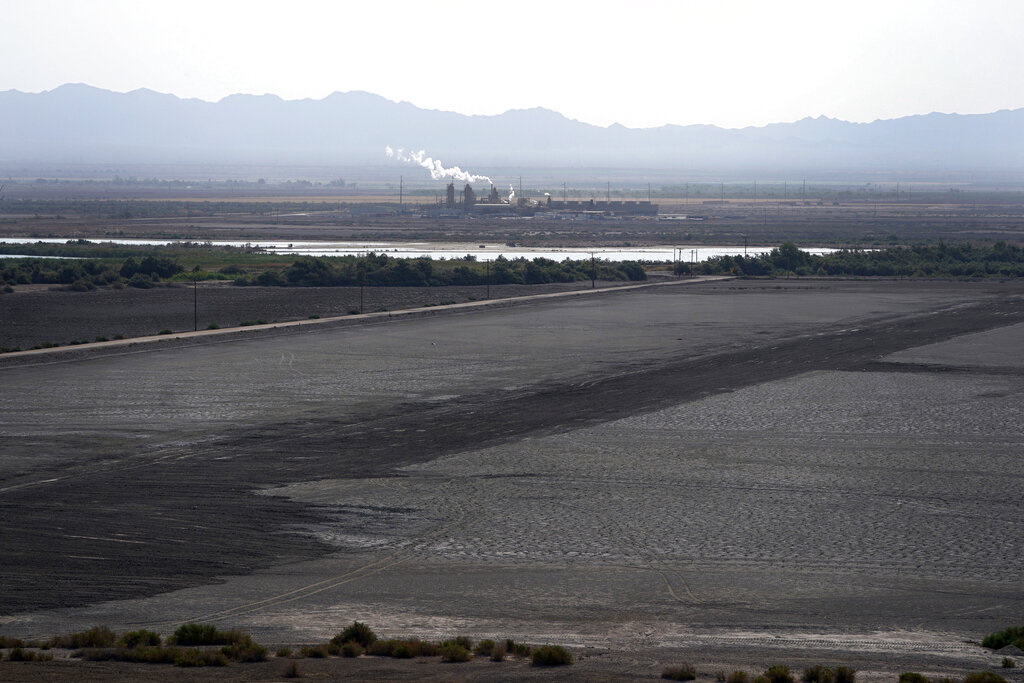California is at a policy and fiscal crossroads. It must decide whether to rewrite the extraction business model to benefit impacted communities, or to continue with the traditional model that causes unmitigated environmental and economic injustices.
The Salton Sea region is facing economic pressure to become a substantial domestic supplier of lithium, placing greater challenges on lower-income communities that already face significant disparities — yet contribute so much to the prosperity and quality-of-life of others. Without meaningful investment, these communities will fall further behind as their needs are sidelined in the rush for lithium development.
This is a story all too real to the farm laborers and low-wage tourism workers who call this region home. Growing up in a small mobile home park near the Salton Sea, I saw the economic and health challenges my family and neighbors faced. I witnessed the perseverance of farmworkers toiling in the fields to produce food for other people’s families, and communities left vulnerable to the impact of dust storms, power outages and severe heat.
I had a hard time grappling with the reality that these resilient workers came home to so little even though they provided so much.
I’m not asking for a favor or charity. I’m asking that our communities receive their fair share because California’s future is inexorably tied to the Salton Sea’s future.
That means investing in Salton Sea communities benefits the state — and not just gifts or one-time funding that can be taken away during challenging budget years. This year, state leaders have a chance to place a climate bond on the November ballot, which would give voters an opportunity to approve important environmental protections and clean energy projects. This bond can benefit all areas of the state, while also providing $400 million to the Salton Sea region and $15 million to establish a conservancy.
While residents here continue to endure high poverty rates and health disparities, agricultural production has expanded and new economic opportunities have emerged. Both the Coachella and Imperial valleys rank among the state’s top agricultural areas, with production in Riverside County valued at $1.5 billion, and production in Imperial County two years ago valued at $2.6 billion.
The advent of lithium and other rare earth extraction technologies only increases the region’s potential contributions.
As the water in the Colorado River dries up and the Imperial Valley’s legal share is mandated to other areas, where is the commitment to address the impacts of decisions made in Sacramento and Washington, D.C.?
The 2003 Quantification Settlement Agreement strengthened water resiliency for coastal Southern California while reducing pressure on the Delta. California’s water supply from the Colorado River hinges on the Salton Sea, and that means its health must be a key statewide priority.
Related Articles
‘Save the Ridge’ battle could finally be settled in Contra Costa County
What do Claudia Sheinbaum’s years in the Bay Area reveal about how she will govern Mexico?
Fire season 2024: What’s in store for the Bay Area and beyond
Biologists rescue young falcon who fell from San Jose City Hall nest
Opinion: Good riddance to El Niño, but La Niña won’t be much relief
Water reductions also reduce air quality well beyond the region. Hydrogen sulfide emissions – the rotten egg smell — have reached as far as Los Angeles and Orange County, making the Salton Sea an air quality issue for all of Southern California.
Aside from our role in water and food supply, experts believe our region has the world’s highest concentration of lithium contained in geothermal brines. California can become a competitive source of lithium that could satisfy more than one-third of the global demand, provide a mineral deemed critical for national security, and ensure a just transition to clean energy for workers in legacy industries.
California has an opportunity to make long-awaited investments in the communities that feed and power not only this state, but the entire nation.
Silvia Paz is the executive director of Alianza Coachella Valley and served as the chair of California’s Lithium Valley Commission. She wrote this column for CalMatters.












